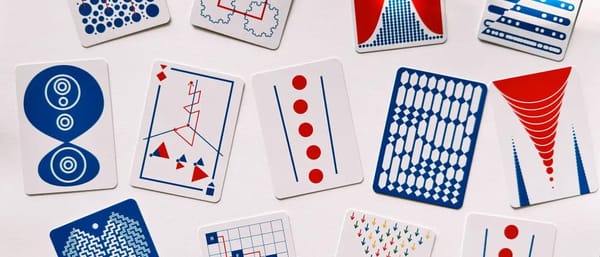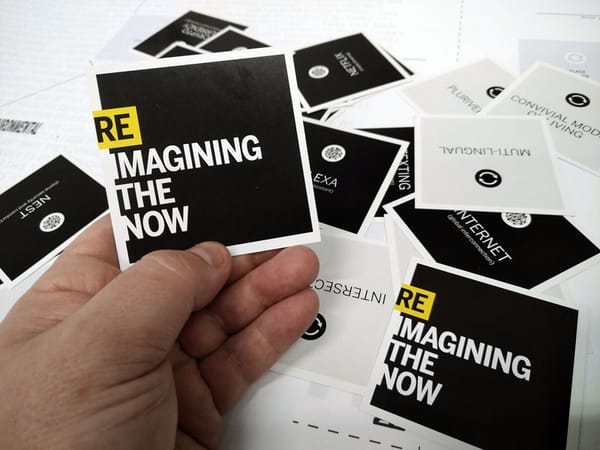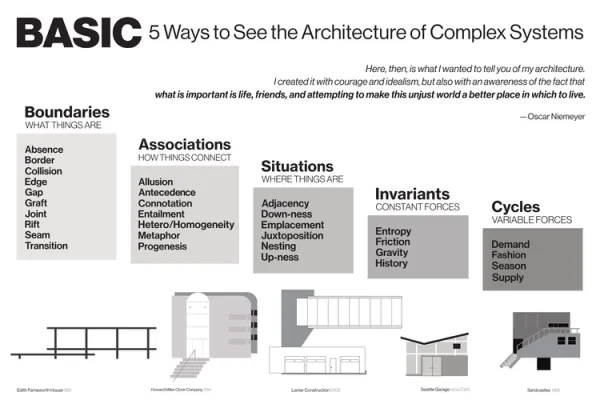№ 102 | Adventures in Systems Zine, CodeCharta, Why Diagrams Fail, The Feed Game, “The Art of Asking Smarter Questions,” The Importance of Shared Labels, and AI and UX Research
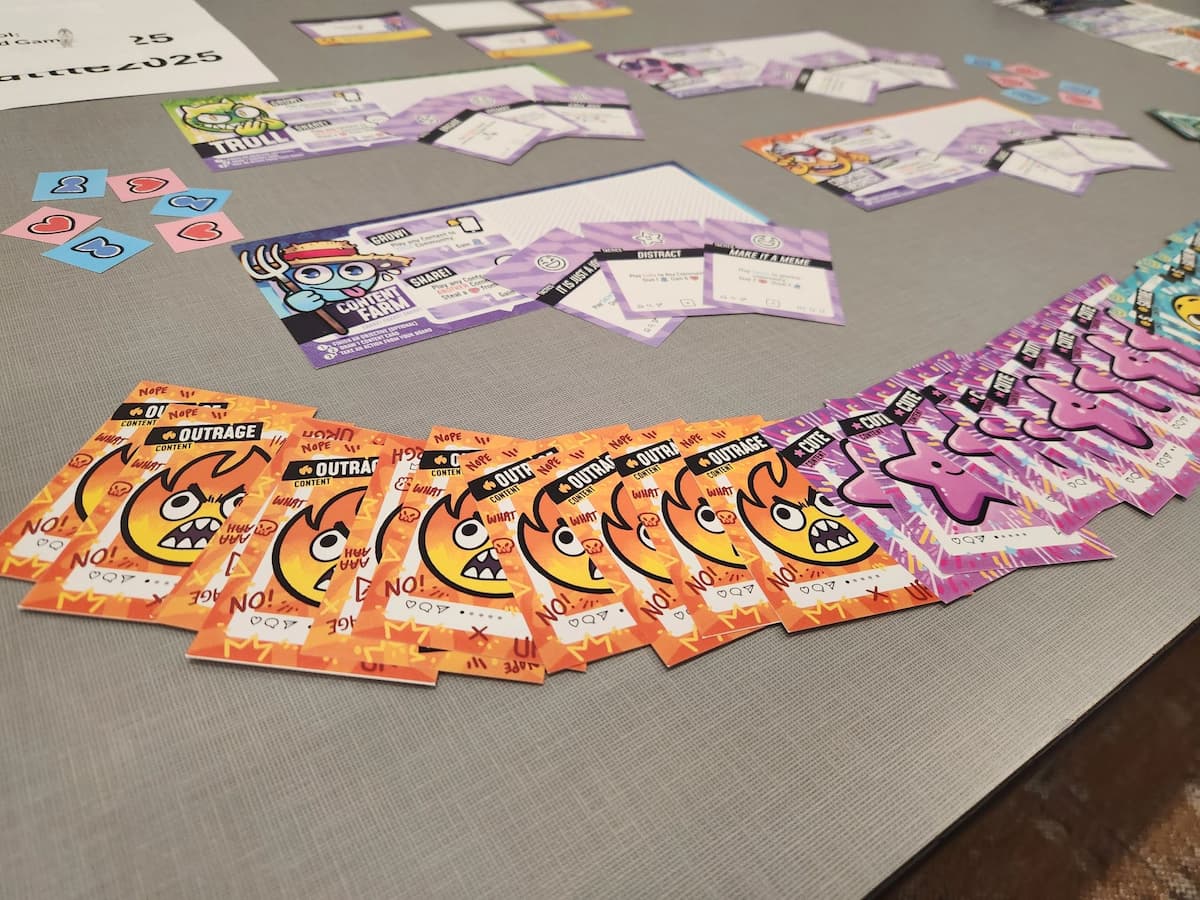
Another roundup of ‘playful things to think with’, or think about. Or think about when you’re thinking. Or… You get the idea!
Oh, and one last plug for the 💥EPIC💥 sized 100th issue of the Thinking Things newsletter. You know, just in case you missed it. I did spend a wee bit of time revisiting and grouping dozens of finds into 11 themes. 🤪
On with the roundup…
Adventures in Systems zine
First, if you’re not following Ruth Malan, you should. She frequently synthesizes and shares a lot information related to systems thinking and seeing. A few years ago, I shared her ‘Advent of System Seeing’ challenge, a 24-day series of activities and prompts for reflection. And… she offers workshops on these topics.
Which leads us to… The Adventures in Systems zine! 😍
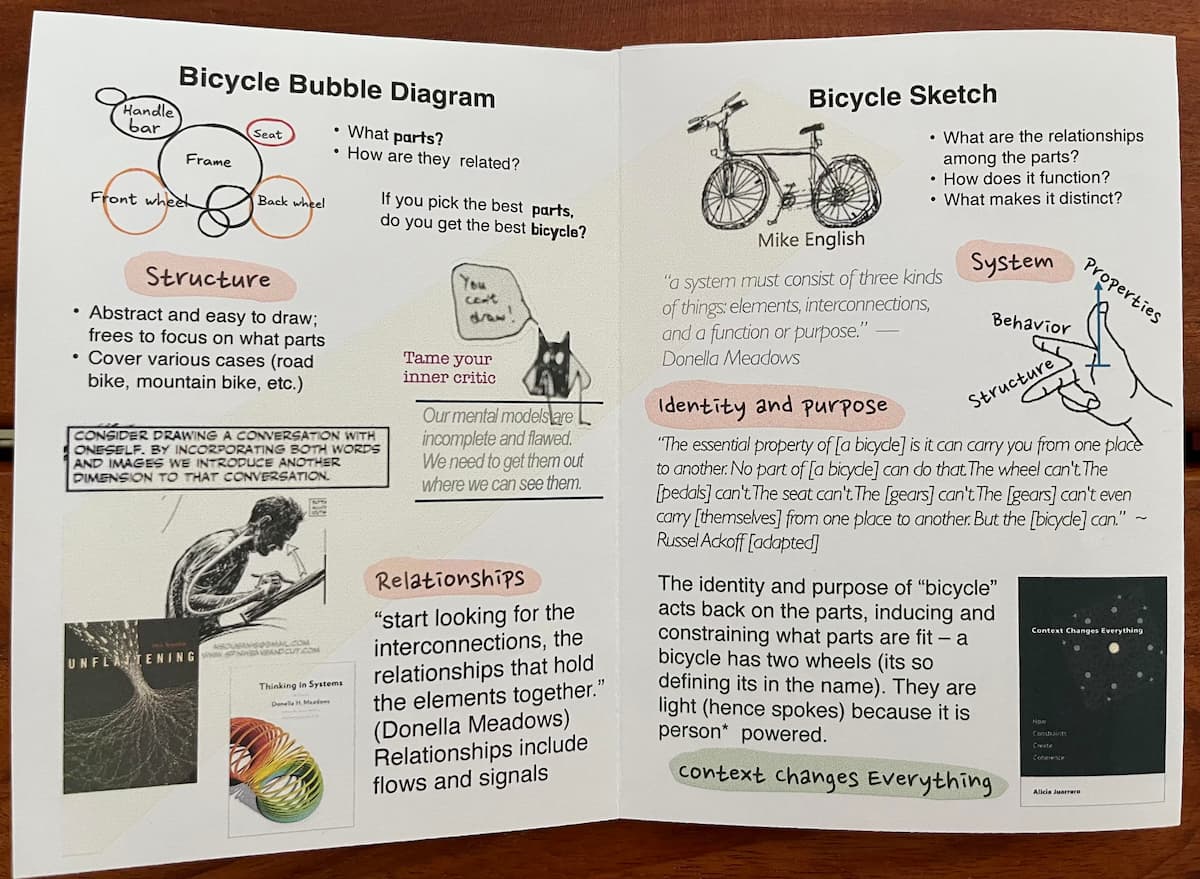
It appears this was created as a handout to support ideas and activities from one of her workshops, which means some context may be missing. That said, the resulting information-to-ink ratio is off the charts! Great as a guide, promotion, or reminder. And, it’s formatted for A3, A4, and 11x17 inch paper sizes. 🙂
Speaking of tangible things…
CodeCharta
So much this. As a tech-adjacent product leader, the “codebase” has (at every company I’ve worked at) always been this black box that, over time, you begin to understand the general shape of. Enter CodeCharta, an “attempt to make code more tangible, so that you can communicate with your managers or colleagues about your codebase, analyse it and find hotspots.”
The core offering is an interactive visualization for your entire codebase. But why stop with a digital representation, when you can 3-D print a city-like model of your codebase!
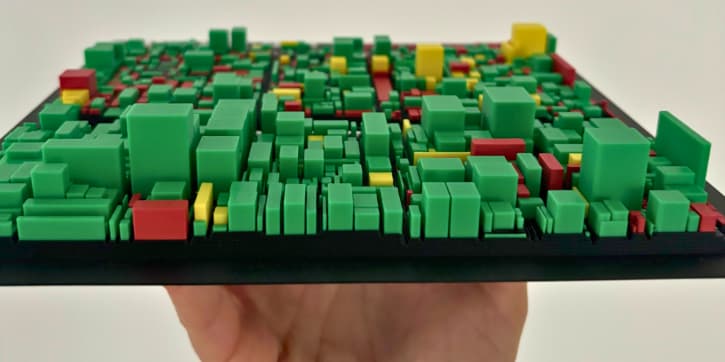
(H/T Raghav Agrawal)
Why diagrams fail
As an unapologetic fan of all forms of Visual SenseMaking, a post about “the most common reason I see diagrams fail” [LI] naturally grabbed my attention. But, the points raised here (more of a nuanced critique) ring true: We need different visualizations for sensemaking vs communication. I would riff a bit on this and ask: How might we bring people into a collaborative thinking process? Which, in my experience, also raises the questions of WHO we bring into the process, and WHEN do we bring them into the process.
Watch me draw out the most common reason I see diagrams fail.
People mix up two completely different jobs. Using a diagram to make sense of something for yourself is one job and using a diagram to help align others is an entirely different job.
Yet, I often see people either:
A) Create a diagram to make sense of something for themselves, then expect that same diagram to work for others (it very rarely does)
B) Skip right to making a diagram for someone else that explains something they themselves don't fully understand yet (also fails)
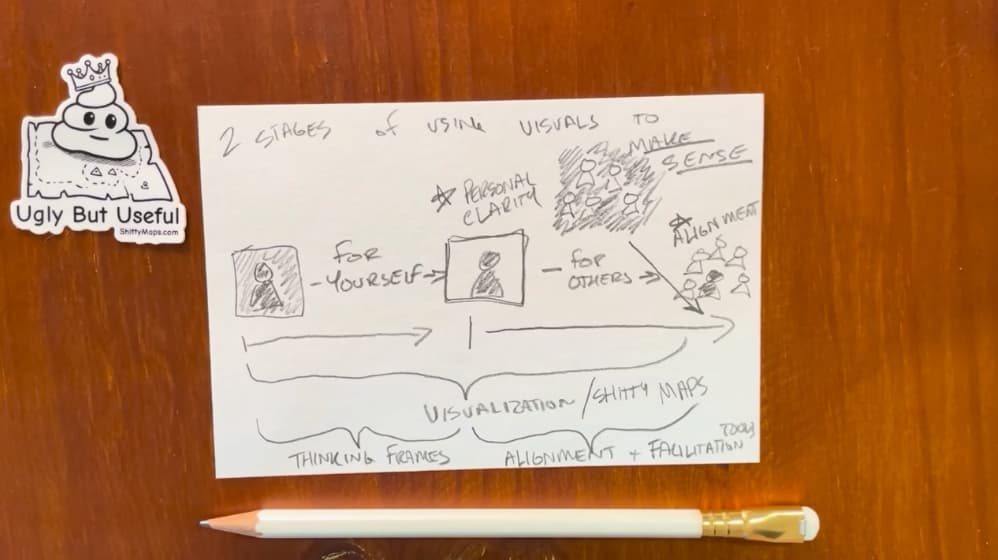
The Feed game
A card game about media manipulation? Sign me up! The Feed: A Game of Social Media Mischief has a simple goal: Go viral at any cost. Designed for teachers and high school students, I know a lot of adults who might benefit from understanding more about how social media platforms work. I love the ethos here:
The Feed doesn't tell them what to do, but shows them.
And…
…a gameplay experience that sparks critical conversations about our actions online and the forces shaping our interconnected world.
No information on how to purchase or download a deck yet, though the creator Scott Dejong [LI] has set up a form to be notified when the deck is available.
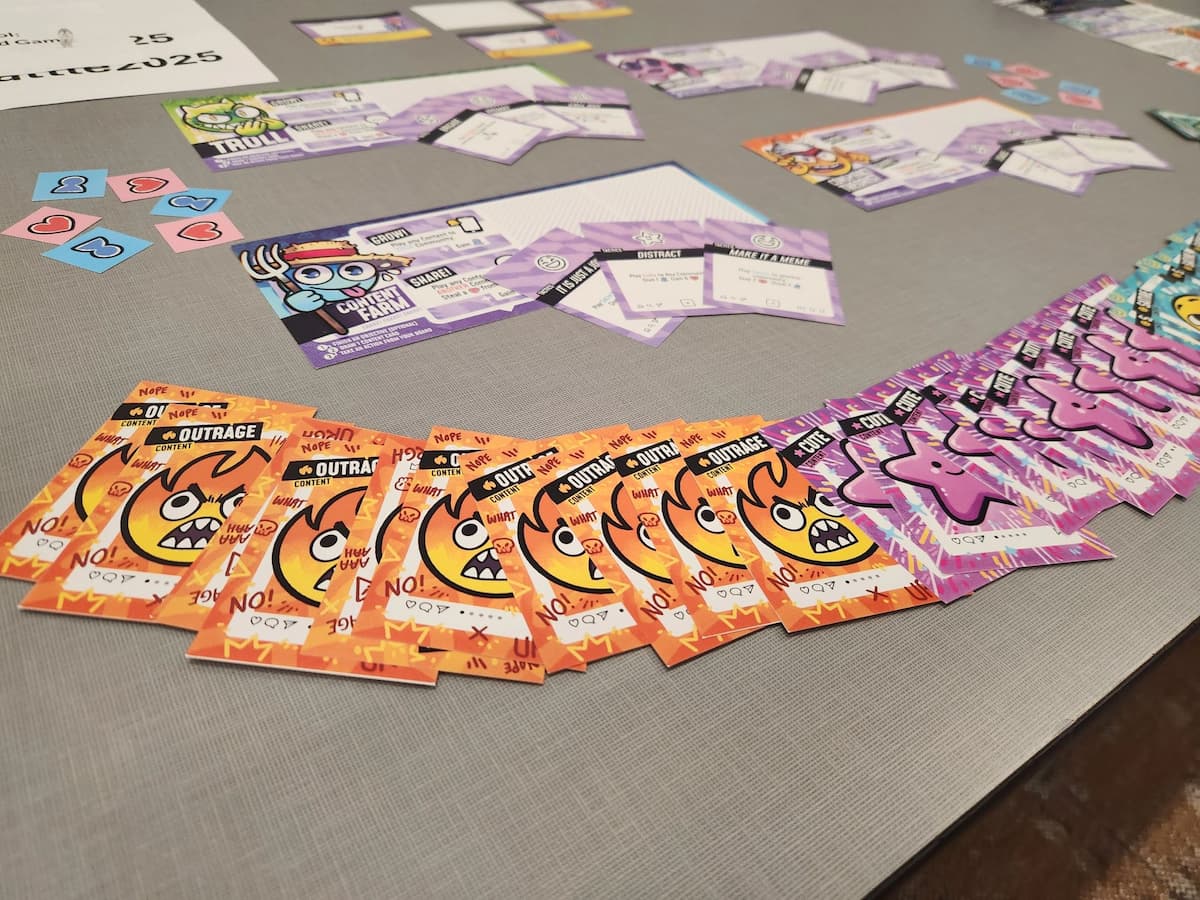
(Found on LinkedIn, here and here; H/T Deb Fuller)
[Article] “The Art of Asking Smarter Questions”
Here’s an article from HBR about asking better questions. Aimed at the business leaders, “The Art of Asking Smarter Questions” [Paywalled?] offers a framework for thinking about five types of questions to ask in strategic decision-making.
Our research reveals that strategic questions can be grouped into five domains: investigative, speculative, productive, interpretive, and subjective. Each unlocks a different aspect of the decision-making process. Together they can help you tackle key issues that are all too easy to miss.
A quick summation of these 5 domains:
- Investigative: What’s Known? (Also, 5 Whys)
- Speculative: What If?
- Productive: Now What?
- Interpretive: So, What?
- Subjective: What’s Unsaid?

The importance of shared labels
Long ago, I learned not to debate ill-defined labels. To be clear, I’m talking about those words around which people (a) have formed strong opinions, but (b) lack consensus as to the precise meaning of the term in question. Agile. Design Thinking. MVP. Feminism. Discuss these, and you risk talking (arguing!) past each other about fundamentally different concepts that just happen to share the same sequence of letters. Anyway, AI is certainly guilty of the same. The opening page of this book (shared by author Arvind Narayanan [LI]) makes this abundantly clear, with just a slight word substitution:

IMAGINE AN ALTERNATE universe in which people don't have words for different forms of transportation —only the collective noun "vehicle." They use that word to refer to cars, buses, bikes, spacecraft, and all other ways of getting from place A to place B. Conversations in this world are confusing. There are furious debates about whether or not vehicles are environmentally friendly, even though no one realizes that one side of the debate is talking about bikes and the other side is talking about trucks. There is a breakthrough in rocketry, but the media focuses on how vehicles have gotten faster-so people call their car dealer (oops, vehicle dealer) to ask when faster models will be available. Meanwhile, fraudsters have capitalized on the fact that consumers don't know what to believe when it comes to vehicle technology, so scams are rampant in the vehicle sector. Now replace the word "vehicle" with "artificial intelligence," and we have a pretty rood description of the world we live in.
Now replace the word "vehicle" with "artificial intelligence," and we have a pretty rood description of the world we live in."
Speaking of AI, and moving beyond vague generalizations…
AI and UX research
I like this approach to assessing where AI might—or might not—be useful.
This feels like a more honest and… dare I say… RATIONAL way to assess AI usefulness! “Where AI Belongs in UX Research and Where It Doesn’t”

Until next issue… Cheers!


